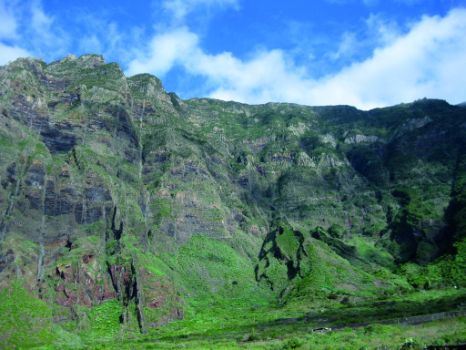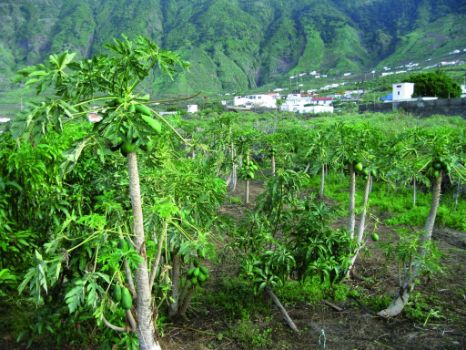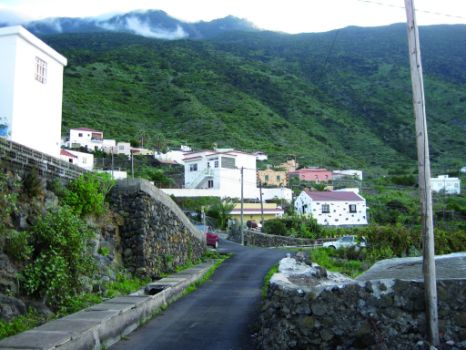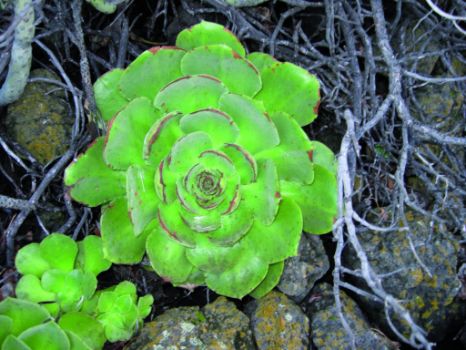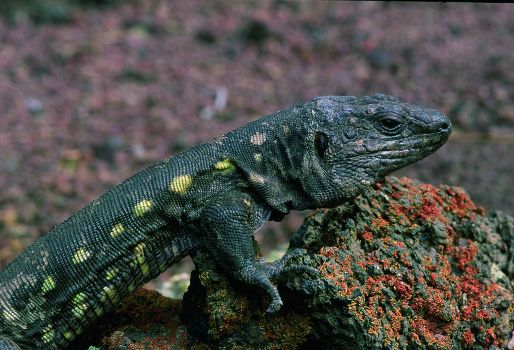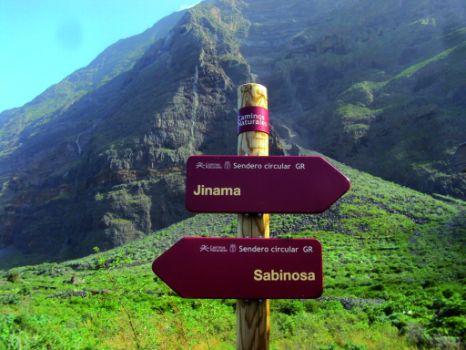Net of Natural
Trails

Stage 14: El Golfo - Lagartario - Camino Canal
Description
Through Valle de El Golfo
The trail runs through the fertile plains of Valle de El Golfo, where a great variety of exotic fruits are grown, passes through the municipality of Frontera and goes near some very interesting places, such as the Guinea Ecomuseum and the center for the rescue of the giant lizard of El Hierro, one of the most endangered species of reptile in Europe.

This second-to-last stage of the circular trail traverses the Valle de El Golfo, passing through the municipality of Frontera toward Sabinosa, on the eastern tip of the valley. From the square Plaza de la Virgen de la Candelaria, in the village of Frontera, the Nature Trail descends the first few meters along a very steep cobbled path reminiscent of the traditional origin of these paths.
From this part of the trail stage, we can see the eastern walls of the arc that forms the Valle del Golfo, as well as the volcanic necks Roques de Salmor. These promontories, 40 and 100 m high (Roque Chico and Roque Grande), rise off the coast of Punta de Arelmo and form the Integral Natural Reserve of Roques de Salmor, one of the sites in which the giant lizard of El Hierro (Gallotia simonyi) has been reintroduced.
Soon the cobbled path is replaced by asphalt roads, crossing first a few farms and then going along plots and crops marked out by stone walls. The trail is at all times sheltered by the high rock walls that limit the valley.

Close to the junction with the main road that links Frontera with Valverde, we find two places of the greatest interest to visitors: the Lagartario or Lizard Centre and the Ginea Ecomuseum. The former is a rescue center for the giant lizard of El Hierro, an endangered species of which only a few hundred specimens remain on the island.
A few meters from the Lagartario, is the Guinea Ecomuseum. This is an old abandoned village that has been rebuilt as a tourist attraction in order to bring to life the different ways of life of the inhabitants of El Hierro over the centuries. Guinea is the oldest village in the Valle de El Golfo and it was once a settlement used by the population of the north of the island for their seasonal migrations. The Ecomuseum has huts, cisterns, living areas, threshing floors, wine-presses, waterholes, stables and dunghills, among other items, all of them equipped with their respective gear. The Guinea Ecomuseum has been named an Asset of Cultural Interest because of its archeological, historical and ethnographic value.
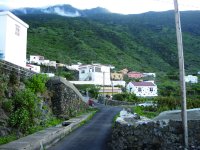
Further on, the Nature Trail continues its journey in the municipality of Frontera, alternating between village streets and vineyards and exotic fruit orchards growing fruits characteristic of the island, particularly papayas and pineapples.
From Frontera, the path leads through the entire El Golfo Valley until reaching its west end, on flat and very fertile grounds with crop lands that cover almost the whole valley. As we gradually leave the urban area behind us, the asphalt road will be replaced by a dirt track that runs parallel to a channel designed to distribute freshwater.
The landscape in this section of the trail is characterized by young soils of volcanic origin covered by ancient crop lands, most of which have now been abandoned and colonized by specimens of pioneer vegetation species, such as sorrels (Rumex Lunaria), prickly pear (Opuntia maxima), grenadilla (Dalbergia melanoxylori), giant velvet rose (Aeonium canariense), berode (Senecio kleinia), fennel (Foeniculum vulgare) ortabaibas (Euphorbia sp.); with the profile of some Canary Island juniper (Juniperus turbinata ssp. Canariensis) outlined against the horizon. In the course of our journey, we will notice the contrast between the dark colors of the volcanic substrate and the green hues of the vegetation growing on the soil.

On our way through the valley, we will pass along the farm Los Llanitos, built when the seasonal migrations of cattle stopped and the people of the region began to settle at the foot of the cliff. Near the village, in the direction of the coast, there is a small unspoiled beach – hardly ever visited - named Charco Azul (Blue Pond), with parking space at a few minutes’ distance.
This section of the trail ends at junction with a sign post that advises us to leave the dirt track that we have been following from Frontera though the valley, in order to access a path in the vicinity of the village of Sabinosa.
Profile
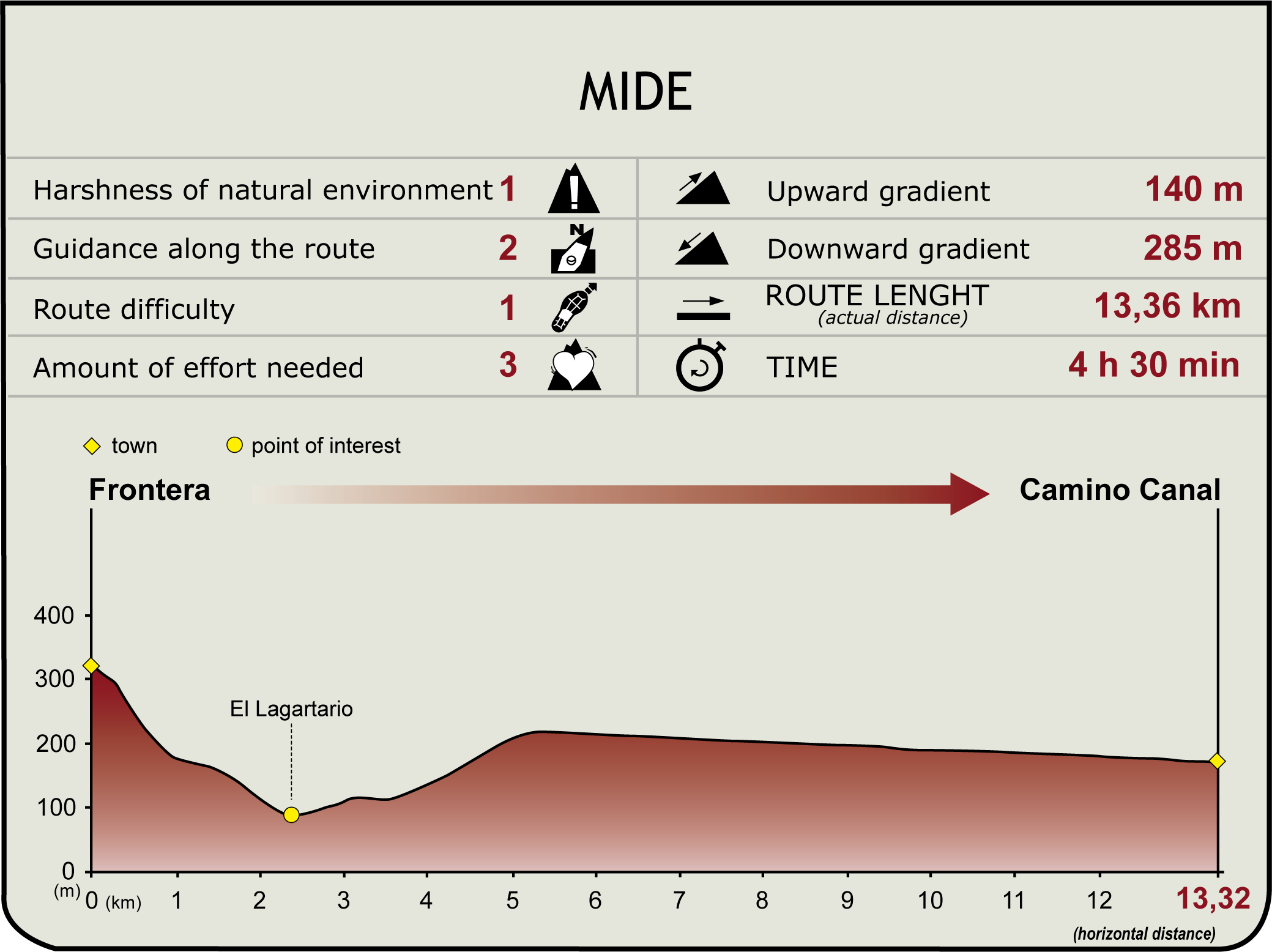
Highlights
Further information
The Giant Lizard of El Hierro
Just when it was thought that the giant lizard of El Hierro (Gallotia simonyi) had dissapeared as a species from his last known refuge at Roque Chico de Salmor, a shepherd found in 1974 droppings that indicated the presence of live specimens in Fuga de Gorreta (in the cliff of Tabataje). As soon as this finding was reported, a plan to rescue the species – endemic to the island - was implemented, which took an important step forward in 1995 with the entry into operation of a Lagartario or Lizard Centre in Guinea.
The Rescue Centre for the Giant Lizard of El Hierro has made it possible to reintroduce almost 500 animals in recent years into the foothills of El Julán, Jaral de La Dehesa and Roque Chico de Salmor, where the population of lizards has increased successfully.
A further 300 specimens are being breed in the Lagartario, feeding on insects, such as crickets, meal worms and newborn mice, which are the staple of their diet. In the terrariums, giant lizards are grouped by age and litter until they are adult; then two or three animals out of each group remain in semi captivity.
The giant lizard of El Hierro is dark grey to brown in color, with grey and blackish hues. It is a thickset reptile, with a broad head and long tail. Two rows of pale orange patches run along its sides, their color becoming more intense during breeding season. It is about 60 cm long and can reach a weight of up to 400 gr. Its development is very slow and it can live up to 20 years.



